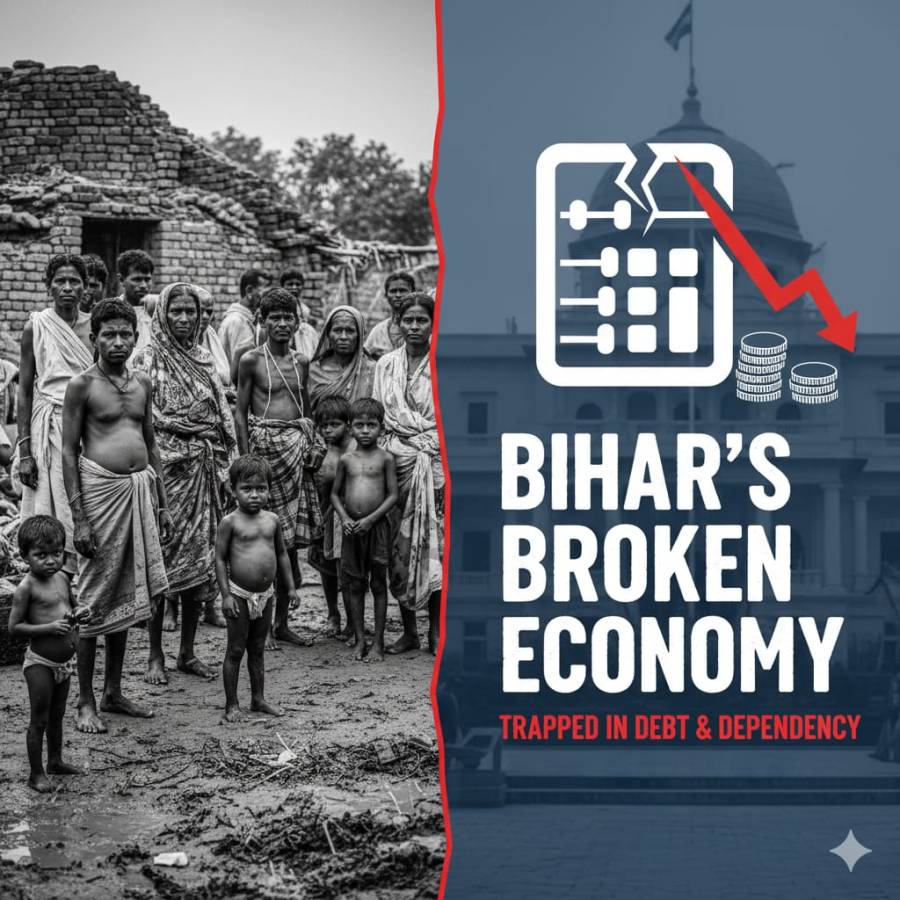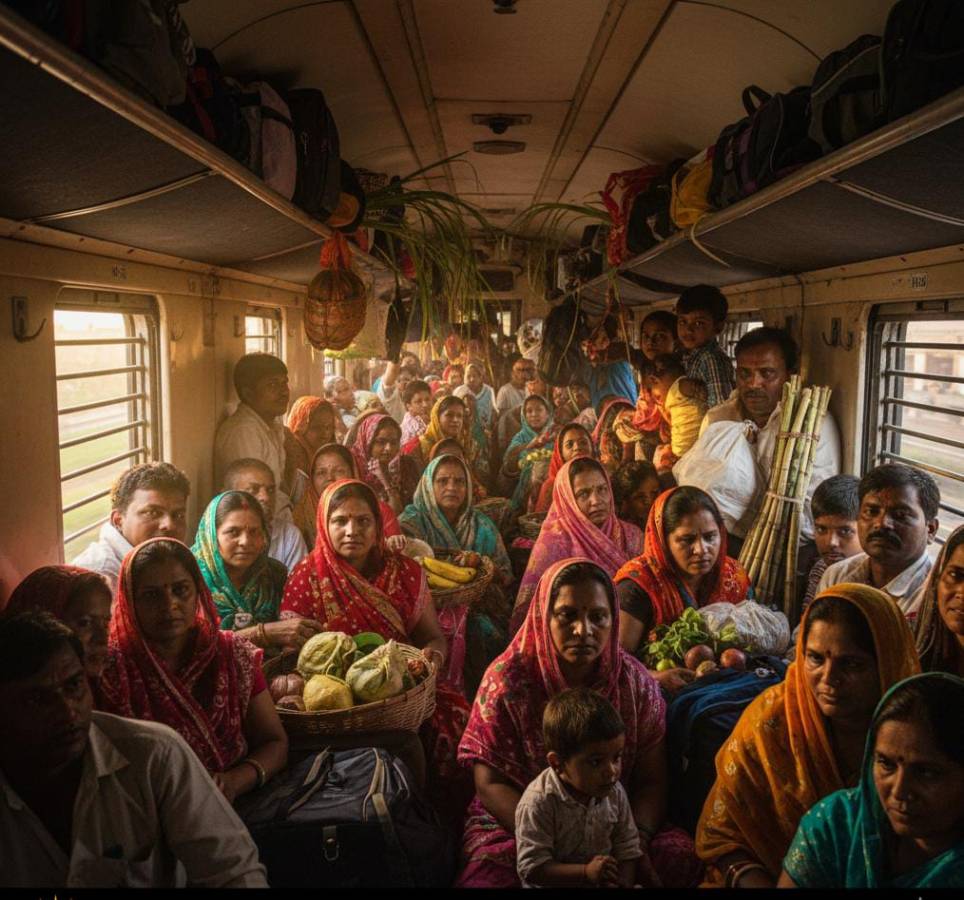
Bihar’s financial health tells a story far deeper than numbers and deficits. Behind the charts and fiscal ratios lies a troubling pattern — a state systematically locked into dependence. The recent financial disclosures of the Bihar government reveal not just weak revenue collection, but a deeper design flaw in India’s fiscal architecture. It’s a story of how a state has been conditioned to survive on borrowed money and central handouts rather than build its own economic muscle.
The Anatomy of Dependency
At the heart of Bihar’s fiscal distress is one fact: the state simply doesn’t generate enough of its own income. For the financial year 2025–26, Bihar’s own tax revenue is projected to be around 5.4% of its Gross State Domestic Product (GSDP) — one of the lowest in the country.
This is not just poor tax collection; it reflects a structural failure to capture the economic activity taking place within the state. In practical terms, Bihar earns very little from its own industries, trade, or services. Most of its money comes from elsewhere — specifically, from Delhi.
Nearly three-fourths (74%) of Bihar’s revenue comes from central transfers, including its share of Union taxes and grants. That dependence makes the state more of a client than a partner in the federal system. Its economic choices, spending priorities, and even its social programmes are largely dictated by what the Centre chooses to give — or withhold.
When the GST compensation grants ended, Bihar’s finances immediately stumbled. That shortfall was predictable, yet no cushion existed. The reason is simple that Bihar’s economic model has never been allowed to stand on its own.
The Cost of Perpetual Reliance
This dependence is not just a budgetary problem — it shapes development itself. Because Bihar relies so heavily on central transfers, it spends most of its budget on salaries, pensions, and welfare schemes rather than on capital expenditure — the kind of spending that builds roads, schools, hospitals, and industries.
In fact, while absolute capital spending has risen slightly over the years, its share in the total budget remains small. This under-investment in productive assets keeps Bihar’s workforce trapped in low-skill, low-income jobs. The result is a vicious cycle that the poor infrastructure limits private investment and growth, which in turn limits the state’s ability to collect taxes.
It’s an economy stuck in neutral running, but going nowhere.
Debt Without Growth
The numbers get bleaker when we look at Bihar’s debt. The debt-to-GSDP ratio is expected to touch 37% in 2025–26 — well above what economists consider healthy. What makes this worrying is not just the size of the debt, but how it’s being used.
Instead of funding growth-oriented projects, much of Bihar’s borrowing goes toward day-to-day expenses — salaries, pensions, and interest payments — which together consume nearly 42% of revenue receipts. When a government borrows just to stay afloat, it mortgages its future capacity to grow.
The modest growth that Bihar showcases in official reports often masks this reality. It’s growth built on loans and transfers, not on productivity or enterprise. In other words, it’s borrowed prosperity — a fragile illusion that disappears the moment external support slows down.
The Politics of Scarcity
This system doesn’t persist by accident. It survives because it benefits the ruling and political class. Managing scarcity is politically easier than creating autonomy. A dependent population, reliant on welfare transfers, remains a manageable one.
By avoiding hard reforms like improving GST compliance, strengthening land and property taxation, or streamlining administrative efficiency, successive governments have chosen the comfort of central dependency over the challenge of economic self-reliance. Populist schemes and subsidies, though essential in parts, have become tools to preserve this structure of dependence.
The outcome is a kind of institutionalized impoverishment — a political economy that rewards dependency and punishes initiative. Bihar remains one of India’s youngest states demographically, yet one of its most fiscally shackled.
Reclaiming Fiscal Autonomy
Breaking free from this trap will require political courage. First, Bihar needs to overhaul its own-revenue generation system — expanding its tax base, improving compliance, and reforming how local revenues are assessed and collected. Without this, the state will continue to function on fiscal life support.
Second, capital investment must take priority over routine spending. Welfare is vital, but not at the cost of infrastructure, education, and healthcare — the foundations of real growth. Without investing in these, Bihar will keep exporting its people as labourers while importing the money to run its own government.
A Future Beyond Dependency
Bihar’s fiscal weakness is not inevitable; it is designed. And what is designed can be redesigned. But for that to happen, the political class must stop viewing central grants as lifelines and start treating them as temporary crutches.
Until Bihar reclaims its fiscal autonomy and rebuilds its internal economic engine, it will remain a state governed through scarcity — an economy that survives, but never thrives.




















